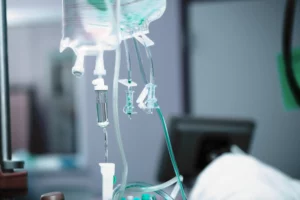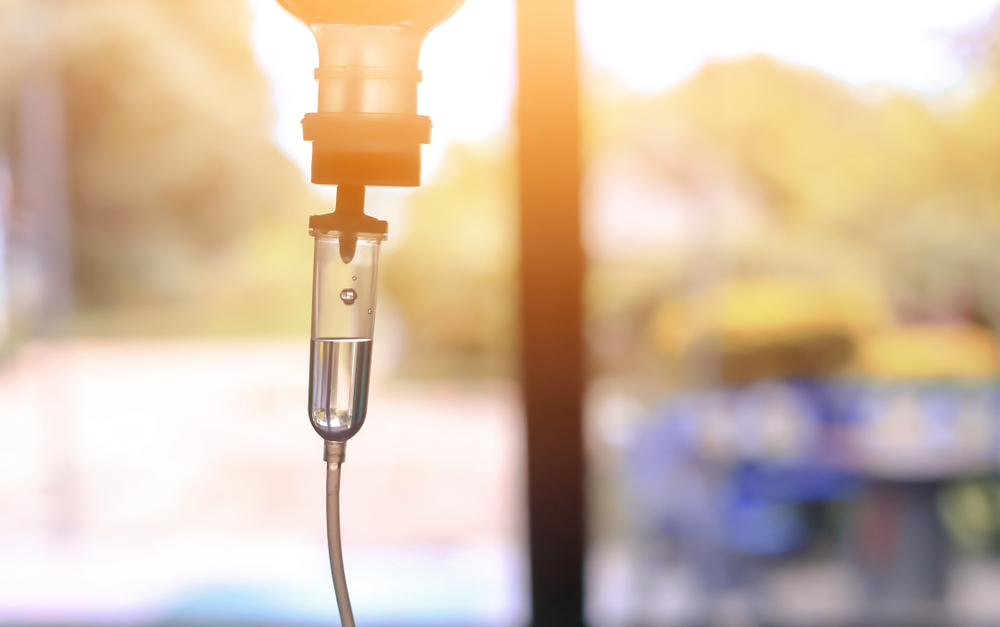Rapid opioid detox is a treatment service offered by select addiction treatment centers that cater to individuals suffering from opioid addiction. Whether the individual is addicted to heroin, fentanyl, or prescription opiates, rapid detox for this addiction quickens the detoxification process so that intensive treatment, which is necessary for full recovery, may commence.
This article will explain what rapid opioid detox is, the rapid detox process, as well as options available for continued addiction treatment.
Rapid opioid detox expedites the detoxification process so that the individual may avoid withdrawal symptoms at their most severe and begin receiving intensive addiction treatment.
What is Rapid Detox?
Rapid detoxification is a process designed to quickly clear opioids from a person’s body in order to help them break free from their physical addiction to the drug. This method is typically performed with sedation or general anesthesia and can take multiple hours. The idea is that by undergoing withdrawal while unconscious, the individual will experience less discomfort and be less likely to fall back into drug use.
Since being developed in the 1980s, several different forms of rapid detox have been created, with most of them involving the administration of medicine while unconscious to reverse the effects of opioids and then induce withdrawal once rapid detox has been completed. The particular medications and strategies used can differ depending on the type of opioid being abused, the patient’s medical history, and other considerations. However, the drugs naltrexone or naloxone are typically used.

What is Naloxone?
Naloxone is an opioid receptor inhibitor, meaning it attaches itself to opioid receptors and reverses or impedes the effects of other opioids. Naloxone can be administered intravenously, intramuscularly, and nasally and has been approved by the FDA for treating opioid overdose and reversing the respiratory depression caused by opioid use. It is commonly referred to by its brand name, Narcan.
What is Naltrexone?
Naltrexone is a drug that is employed to treat a number of illnesses, including opioid dependency and alcohol use disorder. It works by obstructing the effects of opioids and decreasing cravings. Naltrexone is an opioid receptor antagonist, which means it connects to the same receptors in the brain that opioids such as morphine and heroin target. But, unlike opioids, naltrexone doesn’t create a “high” or any other enjoyable sensations when it links to these receptors. Rather, it hinders the effects of other opioids and diminishes opioid cravings.
Rapid Detox vs. Accelerated Neuroregulation (ANR)
Accelerated neuroregulation is often confused with rapid detox, but these two treatments are very different. While rapid detox reduces opioid withdrawal symptoms and quickens the detoxification process, ANR is designed to even out the chemicals in the brain that facilitate communication between nerve cells. This approach combines supplements, diet, and lifestyle modifications to correct imbalances in the brain which can lead to opioid cravings, and does not involve medications.
Although rapid detox and ANR have been used to treat drug addiction, they are considered experimental treatments and should not be undertaken without consulting a medical professional. It is important to get an expert opinion before proceeding with any of these treatments, as these methods may have certain side effects that could put the patient’s health at risk. As such, it is imperative to discuss any potential experimental treatments with a medical professional who has experience in this field.
What to Expect During Rapid Opioid Detox
The detoxification process usually happens in a medical center or a specifically designed detox center and is usually done with the use of general anesthesia. This is due to the fact that the withdrawal signs from opioids can be very intense, and the anesthesia can help to decrease the discomfort during the process. Before detoxification, a person will usually be given an extensive medical check-up to ascertain that they are healthy enough to go through the process. They will also receive a series of medicines to aid in the preparation for the detox.
An individual will then be put under general anesthesia and will receive a number of medications to help cleanse their system of opioids. Usually, this takes a few hours and afterward, the individual is taken to a post-op room where they are monitored as they come out of the anesthesia. It is important to be aware that withdrawal symptoms may continue for a short while after the procedure while the individual physically readjusts.
Following the procedure, the individual will likely be prescribed extra medications to address any ongoing withdrawal effects.

Opioid Withdrawal Symptoms
When someone who has had an extended history of opioid use completes rapid opioid detox, they may experience withdrawal symptoms after the procedure. The intensity of these symptoms can differ based on the particular opioid, the dosage, the person’s metabolism, and other physiological factors. Symptoms include:
- Excessive sweating
- Muscle aches
- Cramps
- Diarrhea
- Rapid heart rate
- Insomnia
- Agitation
- Dehydration
- Depression
- Anxiety
- Runny nose
- Watery eyes
Is Rapid Opioid Detox Effective?
The issue of whether rapid opioid detox is a viable method of opioid detoxification continues to be discussed by medical personnel. While a handful of studies have suggested that ROD may be advantageous for those who have attempted and failed to break away from opioids through traditional detox practices, the research has been limited and not sufficiently controlled, making it difficult to reach a definitive conclusion.
Detox is the first step in the recovery process, and rapid opioid detox can help to reduce the severity of withdrawal symptoms. However, it is important to understand that long-term addiction treatment and support are necessary to sustain sobriety and achieve lasting recovery. Different types of treatment such as cognitive-behavioral therapy, medication, and support groups can provide invaluable resources that equip individuals with the skills needed to stay sober in the long run. Detox alone is not enough to sustain recovery, but when coupled with the right treatment plan, it can be a powerful tool for beginning a successful journey of sobriety.
Continued Treatment Options After Rapid Opioid Detox
Detoxification by itself is not a full solution to a substance use disorder and it is usually not enough to guarantee a sustained recovery. Following the completion of rapid opioid detox, a lot of individuals find participating in a more extensive addiction treatment highly beneficial. These programs may involve inpatient or outpatient therapy and may use an assortment of therapies and support groups. Some of the regular therapeutic approaches that are employed in addiction treatment include:
Medication-Assisted Treatment
Medication-assisted treatment (MAT) is an approach that utilizes drugs to help people struggling with opioid addiction to lessen the intensity of their cravings and the symptoms associated with withdrawal. The primary medications used in MAT are methadone, buprenorphine, and naltrexone.
Inpatient Treatment
Individuals who are struggling with opioid dependence and addiction can receive ongoing assistance through an inpatient rehab program. In these programs, clients stay at the facility for a time period of 30-90 days, which allows them to receive support and guidance as they start the recovery process. This type of program is beneficial for those with a serious addiction, those who have been using opioids for an extended period, or people who have a mental health issue in addition to the addiction.
Outpatient Treatment
Outpatient rehab for opioid addiction is a form of treatment that allows people to stay in their own homes while still receiving treatment. This kind of rehab normally involves regular appointments at a treatment center for psychotherapy, support, and other types of assistance. This type of rehab can be a suitable solution for people who have a milder addiction, who have a strong backing system at home, or who can’t take a break from their job or other commitments to attend inpatient rehab.
Aftercare
Aftercare programs play an essential role in treating opioid addiction, as they are capable of minimizing the chances of relapse and sustaining long-term recovery. These programs may include continuous counseling and therapy, support groups, and mentorship. They can be conducted on an individual or group basis, and can occur in multiple settings, such as inpatient and outpatient rehab centers or within the community.

Sober Living Programs
Residences for people recovering from opioid addiction offer a sober and reinforcing atmosphere. These homes are typically shared living areas, where inhabitants must abide by particular rules, such as no drug or alcohol intake, keeping a job or other obligations, and participating in meetings. Sober living homes can be a beneficial transition phase for people who have finished inpatient or outpatient treatment, and provide a well-organized and strengthening environment for individuals as they start to get back into the community.
Rapid Opioid Detox in Los Angeles
At MD Home Detox, our knowledgeable and experienced team will help you determine the right course of action for your specific requirements. The process will start with a thorough evaluation and your treatment plan will be reanalyzed consistently to maximize the likelihood of success. I
f you or a loved one is dealing with opioid addiction, assistance is available at MD Home Detox. Our professionals in opioid addiction can show you the path to an opioid-free life. Reach out to us today to learn more about rapid opioid detoxification and the other services we offer.

